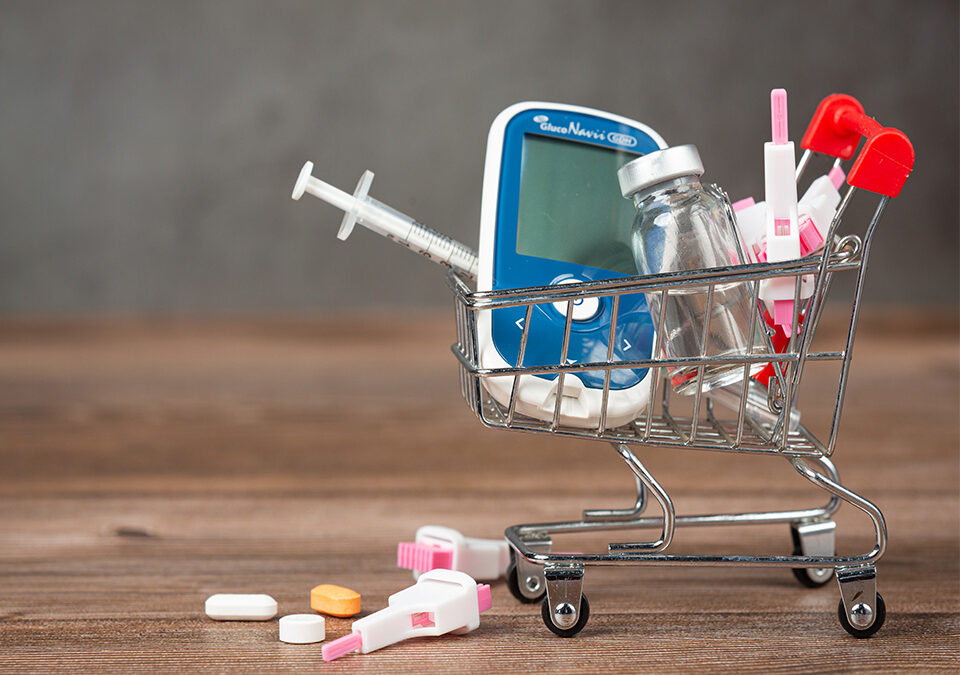
Does Diabetic Retinopathy Lead To Blindness Or Can It Be Treated?
January 3, 2022
Understanding The Risk Of Mental Health Problems In Teens With Diabetes
January 3, 2022Diabetic ketoacidosis is a diabetes complication that is mainly associated with type 1 diabetes. The condition describes a state in which levels of ketones and blood sugar are elevated to the extent that they are life-threatening. The condition is dangerous as the combination of high ketones and blood sugar makes blood too acidic. This can in turn affect the functioning of vital organs such as the liver, as well as the kidneys. The condition can develop rapidly and requires emergency treatment, making awareness of the symptoms critical. It has an overall death rate of 2 to 5 percent.
Warning Signs of Diabetic Ketoacidosis
Diabetic ketoacidosis symptoms include:
- Increased thirst & urine output
- Increased breathing rate
- Dryness of the mouth & dry skin
- Headaches & muscle aches
- Fatigue or exhaustion
- Nausea & vomiting
- Abdominal pain
- Fruity-smelling breath
- Disorientation or confusion
The Causes Of Diabetic Ketoacidosis
Diabetic ketoacidosis develops when blood sugar levels are highly elevated, while insulin levels are low. This means that glucose cannot be metabolized as an energy source, which is why blood sugar levels rise. Since glucose is not available as an energy source, your body turns to fat cells as a source of energy. This breakdown of fat for energy releases ketones. The buildup of ketones increases blood acidity and is known as diabetic ketoacidosis.
In most cases, diabetic ketoacidosis is caused by:
- Missing an insulin dose or not getting an adequate dose
- The presence or onset of an illness or infection
- Clogging or disconnection of insulin pump tubes
Other Risk Factors For Diabetic Ketoacidosis

In addition to the common causes listed above, there are other conditions that are associated with an increased risk of diabetic ketoacidosis. These include:
Pregnancy – Women who have diabetes during pregnancy tend to experience increased insulin resistance during the progression of pregnancy. This increases the need for insulin and if not monitored and accounted for can lead to diabetic ketoacidosis.
Stress – Any emotional or physical trauma can cause levels of stress hormones including cortisol and adrenaline to rise. This makes it harder for your body to use insulin efficiently, raising the risk of diabetic ketoacidosis.
Pancreatitis – This inflammatory condition of the pancreas can affect insulin production. The drop in levels of insulin can then trigger diabetic ketoacidosis.
Cardiac Incidents – Diabetes increases the risk of cardiovascular disease and cardiovascular incidents such as a heart attack or stroke can also lead to diabetic ketoacidosis.
Alcohol Or Drug Abuse – The use of any illicit drug or high intake of alcohol causes your body to produce hormones that interfere with insulin function, increasing the risk of diabetic ketoacidosis. Drug users and alcoholics are also more likely to miss medication or insulin doses, leading to diabetic ketoacidosis.
Use Of Certain Medications – The use of corticosteroids and certain antipsychotic drugs may increase the risk of diabetic ketoacidosis.
Diabetic ketoacidosis is something that every diabetes patient and caregiver should be aware of, as it can cause fatal complications including cerebral edema, cardiac arrest, and kidney failure. If you notice any of the warning signs, seek emergency medical care. Most importantly, prevention is more effective than treatment, so strictly monitor and keep blood sugar levels in check, and make sure that there are no blockages or any damage to your insulin pump.




